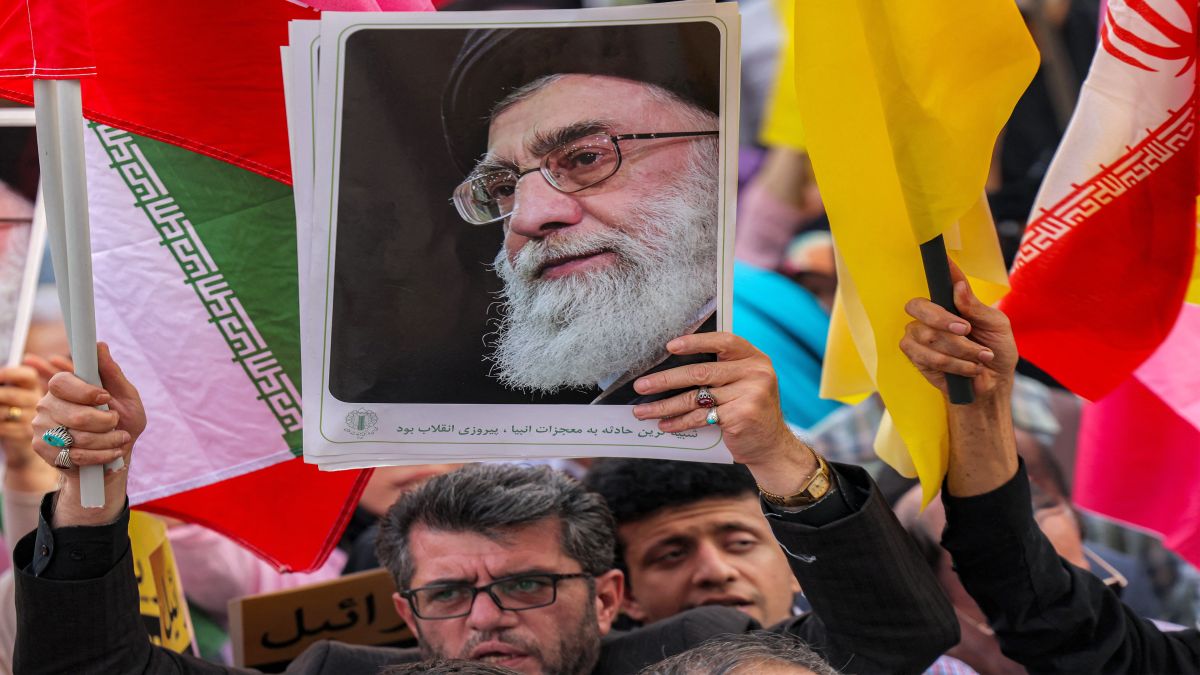Last Sunday (June 15), Israel’s Prime Minister Benjamin Netanyahu sat down for an interview with Fox News in which he was asked about the goal of the strikes that the Jewish nation began early Friday.
“Is regime change part of the effort here?” the Fox News interviewer asked to which Netanyahu responded, “It could certainly be the result because the Iran regime is very weak,” adding, “We did act — to save ourselves, but also, I think, to not only protect ourselves, but protect the world from this incendiary regime. We can’t have the world’s most dangerous regime have the world’s most dangerous weapons.”
This was followed up with Reza Pahlavi , the exiled son of Iran’s last monarch, Mohammad Reza Shah Pahlavi, calling for a regime change in Iran, declaring that Supreme Leader Ayatollah Ali Khamenei had “gone into hiding underground” and that the Islamic Republic is “in the process of collapsing”.
And on Thursday, Israel’s Defence Minister Israel Katz said that he and the Israeli PM had instructed the military to “intensify strikes against strategic targets” in Iran in order to remove the threats facing the State of Israel and destabilise the Ayatollahs’ regime. “The cowardly Iranian dictator sits deep inside his fortified bunker and launches deliberate attacks at hospitals and residential buildings in Israel,” said Katz, referring to Iran’s Supreme Leader Ayatollah Ali Khamenei. “These are the gravest forms of war crimes – and Khamenei will be held accountable for his crimes.”
As Israel steps up the pressure against the 86-year-old Iranian cleric , who is considered the most powerful man in the Islamic Republic, a question comes up: if the need arises, who could become Iran’s new Supreme Leader?
How is Iran’s Supreme Leader chosen?
Before we dive into the list of probables to replace Ayatollah Ali Khamenei , one must understand how the country chooses its Supreme Leader. The job of picking Iran’s Supreme Leader falls upon the Assembly of Experts, as enshrined in articles 107 and 111 of the constitution.
The Assembly of Experts is a body that comprises over 80 members who serve eight-year terms and are authorised to elect, supervise and, if necessary, dismiss the supreme leader. Although the members are elected by a popular vote, they are first vetted by the Guardian Council, much like presidential and parliamentary candidates.
Who are in the running to be Khamenei’s successors?
Mojtaba Khamenei: As per an Iran International report, the frontrunner to be Iran’s next Supreme Leader is Mojtaba Khamenei , the second son of Ali Khamenei and his most politically influential offspring.
Born in 1969, Mojtaba was trained by influential teachers as he studied theology and became a cleric like his father. He teaches theology at the Qom Seminary, the largest Islamic seminary in Iran, even today.
It wasn’t until 2005 that Mojtaba chose to stay out of the public eye. However, in that year’s election, he supported Mahmoud Ahmadinejad with many stating that it was Mojtaba who helped Ahmadinejad secure the presidential post in 2009. However, relations between the two soured after Ahmadinejad accused Mojtaba of embezzling funds from the state treasury.
In 2021, Mojtaba was granted the title of ayatollah, which is a constitutional requirement to serve as Iran’s supreme leader. And in recent years, Iran watchers note that Ayatollah Ali Khamenei has been grooming him for succession. Moreover, he has deep ties to both the Islamic Revolutionary Guard Corps (IRGC) and Iran’s clerical establishment, making him an ideal choice to replace his father.
Alireza Arafi: Another name doing the rounds is that of Alireza Arafi , a trusted confidant of Khamenei. Arafi holds several key positions, including deputy chairman of the Assembly of Experts, member of the Guardian Council, and Friday prayer leader in Qom.
Khamenei once even hailed Arafi as an “original, intellectual and resourceful jurist”.
However, the cleric, who shares close ties with Khamenei’s core ideology, is tech-savvy and wants the clergy to embrace new technologies that could bring out the institution from its centuries of monotonous practices.
The only hindrance to Arafi’s elevation is the colour of his turban. Unlike Iran’s Supreme Leader Khamenei, who wears a black turban, Arafi wears a white one. Black turbans are traditionally worn by Sayyids, who claim to be descendants of the Prophet Mohammad and Imam Ali, the first Shi’ite Imam. However, it’s worth noting that Hossein Ali Montazeri, a cleric initially appointed Khomeini’s successor, was also a white turban cleric.
Hashem Hosseini Bushehri: A third candidate in the running is Hashem Hosseini Bushehri. A senior Iranian cleric, Bushehri holds multiple important roles — the first deputy chairman of the Assembly of Experts, the head of the Qom Seminary Society, and Friday prayer leader in Qom.
A political analyst in Iran notes that Bushehri’s close ties to Khamenei and key leadership roles increase his prospects.
Ali Asghar Hejazi: Serving as a political security affairs official in Khamenei’s office, Hejazi is known for his role in the administration overseeing Iranian intelligence. He has close ties to both the Guards and clerical elites — and is often consulted on decisions regarding defence and strategy. Notably, Hejazi isn’t an ayatollah but the heft he carries makes him a sound choice to be Iran’s next Supreme Leader.
Ali Akbar Velayati: A former foreign minister, Velayati has served as a close advisor to Khamenei on foreign affairs. A veteran diplomat, he is known for holding nuclear negotiations and has strong ties to the leadership.
Experts note that if Israel is successful in causing a regime change — though it seems unlikely — it wouldn’t lead to a full democracy. They believe that in case Israel were to assassinate the supreme leader, the IRGC would impose martial law. Another scenario is a popular uprising — something that Netanyahu is calling for the people of Iran to do.
Only time will tell what comes next for Iran, but for now, we sit and watch the action unfold.
With inputs from agencies
)